Visit to download the full and correct content document: https://textbookfull.com/product/spying-on-the-south-an-odyssey-across-the-american -divide-tony-horwitz/
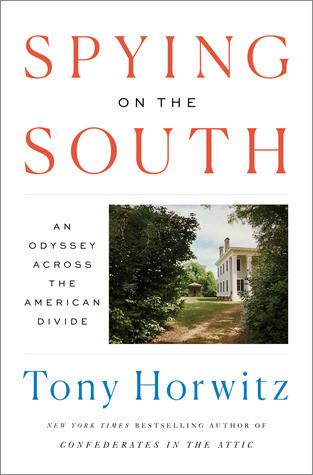
More products digital (pdf, epub, mobi) instant download maybe you interests ...

Water Security Across the Gender Divide 1st Edition
Christiane Fröhlich
https://textbookfull.com/product/water-security-across-thegender-divide-1st-edition-christiane-frohlich/

An American Odyssey: The Life and Work of Romare Bearden Mary Schmidt Campbell
https://textbookfull.com/product/an-american-odyssey-the-lifeand-work-of-romare-bearden-mary-schmidt-campbell/
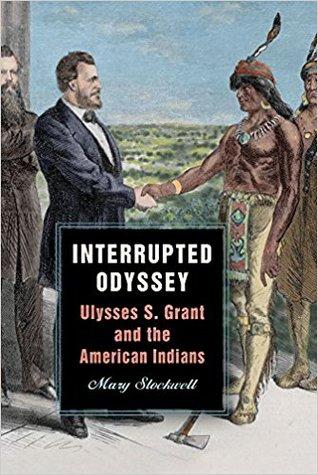
Interrupted Odyssey Ulysses S Grant and the American Indians Mary Stockwell
https://textbookfull.com/product/interrupted-odyssey-ulysses-sgrant-and-the-american-indians-mary-stockwell/

The Hundred Year Walk An Armenian Odyssey First Edition Mackeen
https://textbookfull.com/product/the-hundred-year-walk-anarmenian-odyssey-first-edition-mackeen/
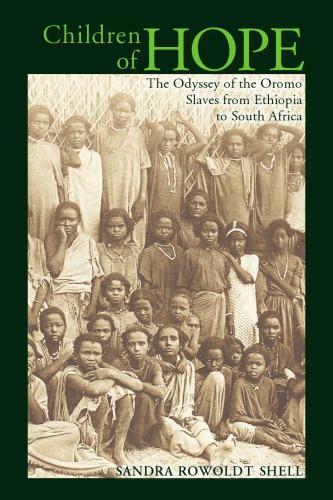
Children of Hope The Odyssey of the Oromo Slaves from Ethiopia to South Africa Sandra Rowoldt Shell
https://textbookfull.com/product/children-of-hope-the-odyssey-ofthe-oromo-slaves-from-ethiopia-to-south-africa-sandra-rowoldtshell/
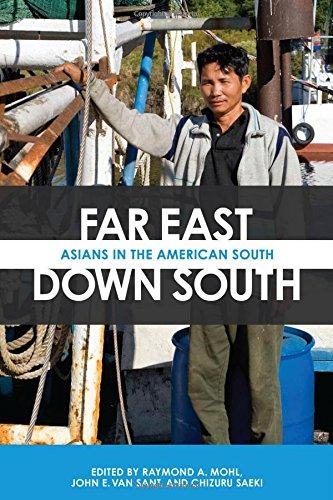
Far East Down South Asians in the American South
Raymond A. Mohl
https://textbookfull.com/product/far-east-down-south-asians-inthe-american-south-raymond-a-mohl/

The Edible South The Power of Food and the Making of an American Region 1st Edition Marcie Cohen Ferris
https://textbookfull.com/product/the-edible-south-the-power-offood-and-the-making-of-an-american-region-1st-edition-marciecohen-ferris/

The Rise and Fall of Emerging Powers: Globalisation, US Power and the Global North-South Divide 1st Edition Ray Kiely (Auth.)
https://textbookfull.com/product/the-rise-and-fall-of-emergingpowers-globalisation-us-power-and-the-global-north-southdivide-1st-edition-ray-kiely-auth/

2001 An Odyssey in Words 1st Edition Ian Whates
https://textbookfull.com/product/2001-an-odyssey-in-words-1stedition-ian-whates/

ALSO BY TONY HORWITZ
Midnight Rising
A Voyage Long and Strange
Blue Latitudes
One for the Road
Baghdad without a Map Confederates in the Attic
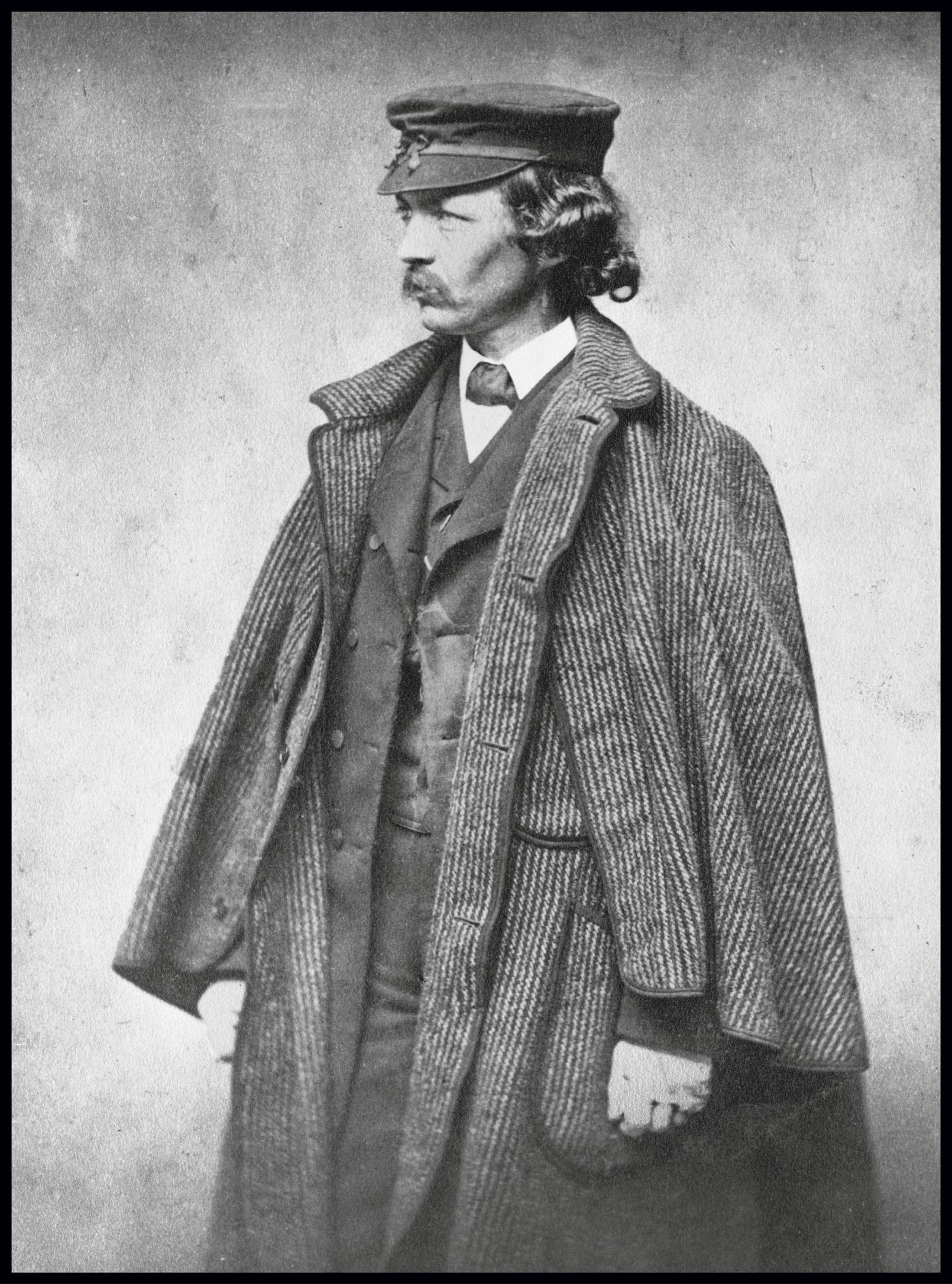
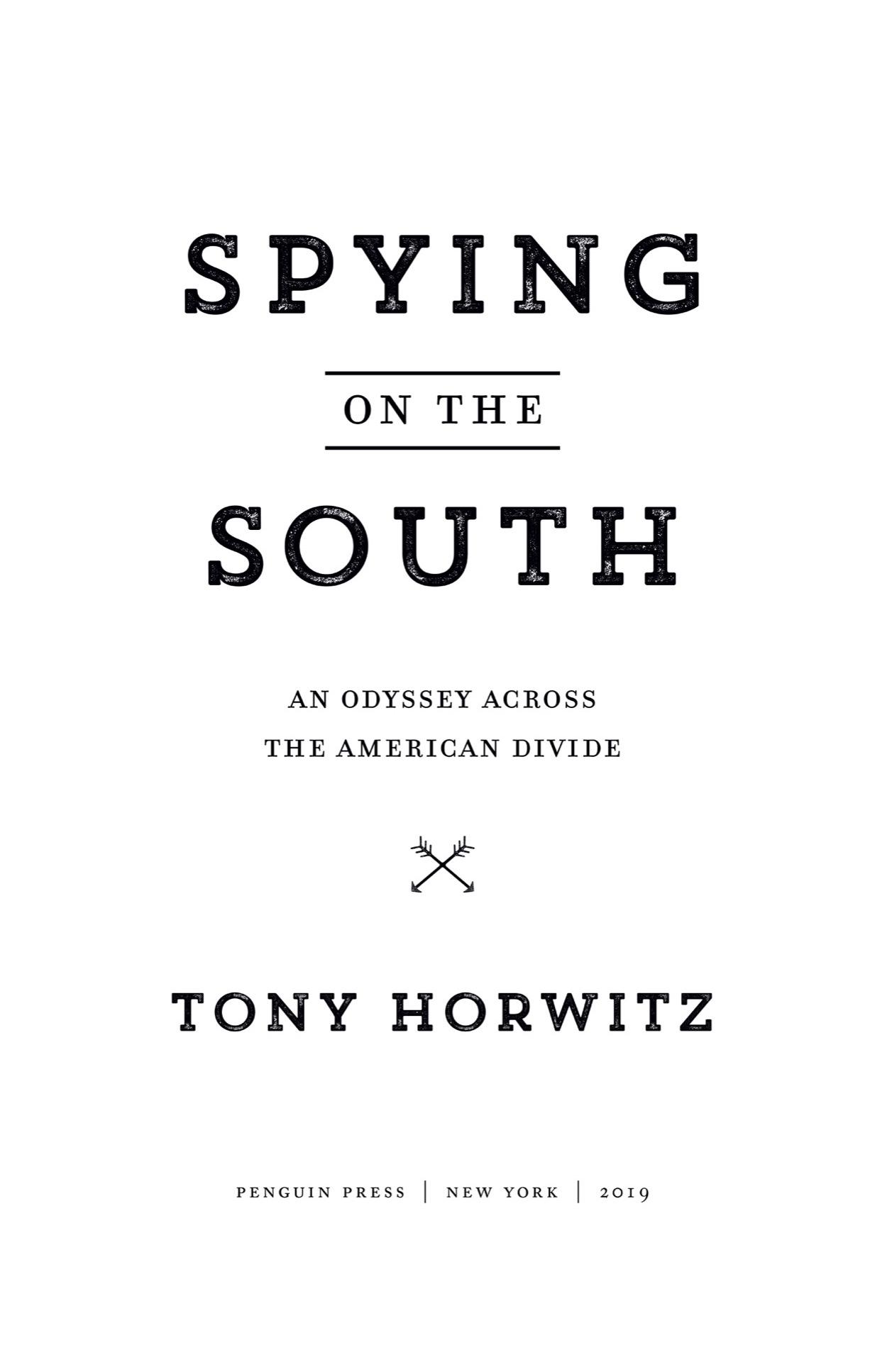
PENGUIN PRESS
An imprint of Penguin Random House LLC penguinrandomhouse.com
Copyright © 2019 by Tony Horwitz
Penguin supports copyright. Copyright fuels creativity, encourages diverse voices, promotes free speech, and creates a vibrant culture. Thank you for buying an authorized edition of this book and for complying with copyright laws by not reproducing, scanning, or distributing any part of it in any form without permission. You are supporting writers and allowing Penguin to continue to publish books for every reader.
Map illustrations by Jeffrey L. Ward
This page and this page: Photograph courtesy of the National Park Service, Frederick Law Olmsted National Historic Site
LIBRARY OF CONGRESS CATALOGING-IN-PUBLICATION DATA
Names: Horwitz, Tony, 1958– author.
Title: Spying on the South : an odyssey across the American divide / Tony Horwitz. Description: New York : Penguin Press, [2019] | Includes bibliographical references and index.
Identifiers: LCCN 2018056912 | ISBN 9781101980286 (hardcover) | ISBN 9781101980293 (ebook)
Subjects: LCSH: Olmsted, Frederick Law, 1822–1903—Travel—Southern States. | Horwitz, Tony, 1958–—Travel—Southern States. | Southern States--Description and travel. Classification: LCC F213 .H768 2019 | DDC 917.504—dc23
LC record available at https://lccn.loc.gov/2018056912
Cover design: Evan Gaffney
Cover photograph of Webb-Bonds-Bamberg House, Greensboro, Alabama, ca. 1855 by Lauren Henkin
Version_1
To Geraldine, the architect of my landscape, in love, life, and work
I WAS BORN FOR A TRAVELER. Frederick Law Olmsted
CONTENTS

ALSO BY TONY HORWITZ
TITLE PAGE
COPYRIGHT
DEDICATION
EPIGRAPH
PROLOGUE: AMERICAN NOMAD
CHAPTER 1
Yeoman Olmsted: “An Enthusiast by Nature”
CHAPTER 2
Over the Alleghenies: Gateway to the Rust Belt
CHAPTER 3
Ohio River: Mutants Making Tow
CHAPTER 4
Kentucky: “A Balance Sheet of Good Against Evil”
CHAPTER 5
To Tennessee and Back: A Thorough Aristocrat
CHAPTER 6
Mississippi River: Steamboat Blues
CHAPTER 7
Lower Mississippi: The Absolute South
CHAPTER 8
New Orleans: The Gumbo City
CHAPTER 9
Into the Bayou: “Dat’s How We Roll”
CHAPTER 10
Central Louisiana: The Unreconstructed South
CHAPTER 11
The Red River: Heart of Mudness
CHAPTER 12
Across the Sabine: “Gwine to Texas”
CHAPTER 13
Gulf Coast: Oil and Water
CHAPTER 14
Crockett, Texas: “The Drift of Things” in Ruby-Red America
CHAPTER 15
Austin and Beyond: The Loon Star Republic
CHAPTER 16
San Antonio: High Holy Days at the Alamo
CHAPTER 17
German Texas: Olmsted in Arcadia
CHAPTER 18
The Hill Country: True to the Union
CHAPTER 19
Upper Guadalupe: And Absalom Rode Upon a Mule
CHAPTER 20
To the Rio Grande: Border Disorder
CHAPTER 21
La Frontera: Days of the Dead
CHAPTER 22
Central Park Ramble
ACKNOWLEDGMENTS
NOTE ON SOURCES
NOTES
BIBLIOGRAPHY
INDEX
ABOUT THE AUTHOR
PROLOGUE: AMERICAN NOMAD
The only lodging in Grafton was a low-slung motel with a smashed door at the entrance. Stepping past shards of glass, I asked the clerk if there were any rooms available.
“You a coal miner?” he answered.
“No. Why do you ask?”
“We sort of cater to them. Special deals.”
If so, there were no takers in sight. On a raw Friday evening, my rental car was the only vehicle in the parking lot. The clerk nonetheless rummaged in a drawer for some time before handing me a key. “Fifty bucks,” he said.
Miner or not, this seemed like a deal. Until I reached my room: broken heater, broken window, beeping smoke alarm. Either the battery was dead or the last guest had tried to disable it. Cigarette butts swam in the toilet.
I went downstairs to a door by the shattered entrance marked “Pub.” Inside, two women stared at video slot machines. After a while one of them served me a beer. It was my second day on the road, and my first in West Virginia. It was also the last night of October, so I asked why I hadn’t seen any trick-or-treaters on my way into Grafton.
“Halloween was last night,” the barmaid said. “It was moved up to Thursday.”
“Why’s that?”
The other woman snickered. “They say it’s because there’s a high school football game tonight. Real reason? Parents didn’t want their
kids out on a Friday with all the drunks and meth-heads partying it up. ”
This was a haunting image: children staying home on Halloween because there were real zombies about. The women returned to staring at their screens, so I drained my beer and followed a road that wound between mountains and railroad tracks: Grafton’s main street. Midway along it, a neon sign winked from the window of a creosote-colored pool hall with yellow police tape strung across the door.
The crime scene décor was a Halloween joke. Inside, a dozen people sat at a bar served by a woman dressed as Dorothy from The Wizard of Oz. As soon as I sat down, the man at the next stool bought me a beer. “Don’t see many new faces around here,” he said, clinking bottles of Budweiser.
Ron Childers was a bullet-headed man in his fifties who repaired aircraft in the next county. “Used to be a lot of coal and railroad jobs here, but by the time I left school you had to get out of Grafton if you wanted to work,” he said. “Burns my ass, people drawing welfare and doing drugs while I’m busting my butt and paying taxes.”
He then told me about a recent spate of drug arrests. Methamphetamines were so rife in West Virginia that cooks had adopted a crude method called shake and bake: tossing pills and volatile chemicals in soda bottles and driving around to mix the ingredients. Vans sometimes burst into flames in midday traffic, passengers fleeing the scene with their clothes on fire.
“Those drugs make folks dumber than the retards in Wrong Turn, ” Ron said. When I looked at him blankly, he explained: “That’s a horror flick set in West Virginia, about inbred mutants who trap and hack up people like possum. ” He smiled. “Gotta have a sense of humor to take all the jokes about how backward we are. ”
“Amen,” interjected the man next to him. He turned to me. “You know the toothbrush was invented in West Virginia?”
“No, I didn’t.”
“Otherwise it would be the teethbrush.”
Ron ordered us another round, and introduced me to a young woman named Jess, who wore a tank top, hot pants, fishnet
stockings, thigh-high boots, and fake blood smeared across her neck and bare midriff. Jess worked on a road crew but was clad for Halloween as a member of a heavy metal band, the Butcher Babies.
“I’m that one, Carla, except for the knife in the vagina,” she said, displaying a picture on her phone of a singer thrusting a bloody dagger at her crotch.
Jess looked up from her phone and studied my costume. Jeans, work boots, plaid shirt, horn-rimmed glasses, dun Carhartt jacket with a notebook and pen stuck in one pocket. “Let me guess, ” she said in an exaggerated drawl. “Yankee boy, spyin’ on us hillbillies?”
This was uncomfortably close to the mark. I couldn’t muster a witty comeback, so I told her a version of the truth: I was doing research on a famous American who came through here in the 1800s.
Jess pondered this for a moment. “Okay, history guy, here’s a question,” she said. “Did you know Mother’s Day was invented in Grafton?”
I shook my head, awaiting the punch line. Some joke about incest?
Instead, Jess led me to the door and pointed down Main Street. “Few blocks that way, big-time shrine to all our great moms. ” Then she turned to greet a friend and share her Butcher Babies picture again.
Walking through the drizzle, I reached a statue of a mother and child beside an old church. A historic plaque identified this sanctuary as the site of the first Mother’s Day observance, in 1908.
A much larger building loomed directly across the street: an ornate brick-and-granite pile with massive columns, evidently a relic of the town’s better days. The hulking edifice was vacant and in poor repair. But at its crown, above elegantly hewn laurels, I could make out the letters “B&O” the bygone rail line I was following through the hills, on the trail of a long-ago traveler.
— I� 1854, � ������ ������������� ��� ��� N��-Y��� D���� T���� noted a slang term common in the South: “Gone to Texas.” This
phrase or its abbreviation, G.T.T. was painted on the doors and fence posts of abandoned homesteads as a sign that the inhabitants had fled debt, the law, or other trouble for a fresh start on the frontier.
“G.T.T.,” the correspondent wrote, “ was almost equivalent, when added to a man ’ s name, to branding him a swindler, defaulter, lawless ruffian or ’ scape gallows.”
The author of this anecdote was identified in the Times as “Yeoman.” Such pseudonyms were common in the 1850s, and traveling incognito was a prudent measure in the slave states, where Northern visitors were often cast as abolitionist snoops and stirrers. The pen name Yeoman also spoke to the writer’s agrarian identity. He was a proudly independent tiller of the land, on sabbatical from his farmstead, touring the plantation South and following the trail of those “Gone to Texas.”
Frederick Law Olmsted is celebrated today as a visionary architect of New York’s Central Park, among many other spaces: the US Capitol grounds, college campuses, residential neighborhoods, the Biltmore Estate in North Carolina. During the latter half of the nineteenth century, Olmsted helped create much of the urban and suburban landscape that Americans still inhabit.
But this farsighted designer was molded by an eccentric apprenticeship: as a merchant seaman to China, an experimental farmer, a European wanderer, and—most significantly—the undercover correspondent known as Yeoman, a Connecticut Yankee exploring the Cotton Kingdom on the eve of secession and civil war.
Before embarking on his Southern tour, Olmsted wrote a friend that he sought “reliable understanding of the sentiments and hopes & fears” of Americans on the other side of the nation’s widening divide. He wanted to gather “matter of fact matter,” which he believed would give ballast to the angry debate over slavery that was tilting the country toward violent breakup.
At age thirty, Olmsted was also restless on his farm and romantically adrift. He hoped that a winter’s sojourn in the South would renew him, and further the latest of his many ambitions, to
make it as a writer. “Should calculate to leave middle of December & return early in March,” he wrote, in time for spring planting.
Instead, the South would consume Olmsted for much of the next decade. As Yeoman, he first traveled the seaboard South, from Maryland to Louisiana, before returning for a much longer trek: across the mountains and Mississippi River to the Texas frontier and back.
He expanded on his newspaper dispatches by publishing three books about the South under his own name. In the preface to the first, Olmsted wrote that he was determined “to see things for himself,” with an eye that was tough but fair. “Let the reader understand that he is invited to travel in company with an honest growler.”
His writing reached a wide and influential audience, at home and abroad, winning praise from Harriet Beecher Stowe, Charles Dickens, and many other luminaries. But this acclaim didn’t translate into strong book sales or a secure perch in what Olmsted called the North’s “literary republic.”
Nor did his work achieve his stated mission, “to promote the mutual acquaintance of the North and South” with fact and observation rather than invective. By 1860, when the last of his Southern trilogy appeared, few Americans were in a mood for literary statesmanship.
Olmsted’s initial faith in reasoned discourse had also waned. In the course of his travels, the South’s “leading men ” had struck him as implacable: convinced of the superiority of their caste-bound society, intent on expanding it, and utterly contemptuous of the North. “They are a mischievous class the dangerous class at the present of the United States,” Olmsted wrote, seven years before the Civil War.
But this hard-eyed appraisal gave him a new mission. To fortify the nation against the South’s slaveholding elite and feudal ideology, the North must uplift its own citizens, to demonstrate the true promise of a free and democratic society.
Olmsted saw many ways to pursue this reformist cause. His own path would lead to a swampy, rock-strewn tract in the middle of Manhattan. In shaping this unpromising landscape, he sought to
create a public park that brought together and elevated “the poor and the rich, the young and the old, the vicious and the virtuous.” —
I� 1953, � ������� ����� ��� ����� �� O������’� ���������� appeared in the Times, Alfred A. Knopf issued a single-volume abridgement of his books about the South, titled The Cotton Kingdom. It had first been published in Britain, at the start of the Civil War, but had fallen off the radar of all but a small circle of scholars. Knopf’s edition also came with a glowing introduction by a leading historian, Arthur Schlesinger, who extolled Olmsted’s work as “indispensable” and a “uniquely candid and realistic picture of the pre-Civil War South.”
Thereafter, The Cotton Kingdom became a staple of research on the South and slavery, and a fixture in college curricula, including a class I took in 1980. At the time, I knew little about Olmsted the landscape architect, and skimmed the book’s six hundred pages for passages I could cite in a term paper. Then I packed the book away, with scores of other college texts I toted around in boxes for decades, imagining that I would one day revisit them.
Of course I didn’t, until a few autumns ago when my wife and I fixed up a barn behind our home in New England, fitting it with shelves for our overflowing books. Under spousal orders to “ruthlessly cull” my college library, I unpacked, glanced at, and discarded four years of liberal arts education.
Then I came to The Cotton Kingdom, perusing a few passages before consigning it to the give-away pile. I read about riverboat gamblers and gunslingers; the “free, rustic, shooting jacket life” of plantation masters who ruled over “little independent negro kingdoms”; bloodhounds trained to track a runaway slave and “tear him a spell”; and poor whites sharing their scarce space and food when Olmsted sought lodging.
“The woman suddenly dropped off her outer garment and stepped from the midst of its folds, in her petticoat,” he wrote of a farm wife, as she lay down on the floor of a one-room cabin with her husband
and child. Olmsted, given their bed, battled insects and listened to “the man and the woman, and the girl and the dog scratching, and the horse out in the shed stamping and gnawing himself.”
Hooked, I searched out Olmsted’s original dispatches for the Times, his personal letters, and other writing on the South. Though his principal beat was the region’s slave-based agriculture, Yeoman strayed into every byway of antebellum life. He recorded the dialect and songs he heard at black churches, and closely observed the natural and built landscape, however humble, including makeshift, leaning structures that looked as though “too much whiskey” had been drunk in them, and new-sprung “mushroom” towns he dreamed of improving.
Olmsted also described in detail what it was like to be a traveler in the South, and not always with delight. “At this dinner I made the first practical acquaintance with what shortly was to be the bane of my life,” he wrote, after choking down corn pone, fatback pork, and “vile coffee” at a rural inn, not realizing “that for the next six months I should actually see nothing else. ”
This scene occurred near the start of Olmsted’s journey from Maryland to Texas and on to the Rio Grande. He traveled by train, stagecoach, riverboat, and horseback, accompanied by his brother John, who hoped a long ride in the dry air of Texas would bring relief to his tubercular lungs.
Olmsted rode back north alone, completing a nine-month odyssey that covered thousands of miles at a time of deepening national crisis. In 1854, free and slave settlers took up arms against each other in Kansas. Mob violence erupted over fugitive slave laws, and the two-party system and fragile political compromise that had held together the North and South began to collapse.
“These principles cannot stand together,” Abraham Lincoln declared of slavery and freedom in 1854. “They are as opposite as God and Mammon; and whoever holds to the one must despise the other.”
Yet Olmsted traversed what would soon be enemy territory, talking and eating and bedding with Southerners against whom he and other Northerners would zealously wage war in the coming
years. He wrote unsparingly about the cruelties and inequities he witnessed, but endeavored to communicate with all those he encountered, including a band of Apache that overtook him as he rode in Texas.
“Traveling about, without definite aim, in an original but on the whole, very pleasant fashion,” Olmsted wrote a friend during a break in this ride. “It gives me an entirely new appreciation of the attachment of nomad tribes to their mode of life.”
These words stirred the nomad in myself. I’d traveled widely, as a foreign correspondent in the Middle East and elsewhere, and as a roaming scribe in my own country. But the vast territory Olmsted crossed on his second Southern journey was mostly unfamiliar to me, including nearly the entirety of Texas.
This journey had also taken Olmsted across the nation’s enduring fault line between free and slave states in his time, and red and blue states in mine. No current issue carried the moral and explosive force of slavery. But there were inescapable echoes of the 1850s: extreme polarization, racial strife, demonization of the other side, embrace of enflamed opinion over reasoned dialogue and debate.
Was the nation unraveling into hostile confederacies? Had that happened already?
The view from my barn-office in New England didn’t offer any answers. Autumn leaves floated in the millstream; alpacas munched grass in our paddock; a windmill turned on a neighboring hill. Before the first snow fell, I’d be gone to Texas, too.

CHAPTER 1
YEOMAN OLMSTED
“An
Enthusiast by Nature”
Olmsted’s letter from Texas about the romance of nomadism was tailored to its recipient: Anne Charlotte Lynch, a New York poet, globe-trotting traveler, and eminent convener of literary salons.
“I like her much and shall try to be intimate with her,” Olmsted confided in an earlier letter to his father. “She is acquainted with all the distinguished people and her taste is highly cultivated.”
Olmsted enclosed samples of prairie flowers in his letter to Lynch and observed of his Texas wanderings that he’d always been “much of a vagabond.”
This Bohemian self-styling bore fruit; upon his return north, Olmsted became a regular at Lynch’s salons. But the letter also held an element of truth: from an early age, Olmsted had been nomadic, drifting between homes, continents, and a bewildering array of courtships, callings, and beliefs.
This vagrancy ran counter to Olmsted’s deeply rooted lineage in Connecticut. His forebears were among its first colonists and spawned generations of model Yankees: farmers, deacons, seafarers, Revolutionary War soldiers. Olmsted’s father, John, prospered as a dry-goods merchant on Main Street in Hartford, the city his ancestors had helped found almost two centuries before.
Frederick’s mother, Charlotte, also came from old Connecticut stock and was raised in a household with a love of Latin poetry. Little else is known about her. She gave birth to Frederick in 1822 and a
second son in 1825. Five months later, she died from an overdose of laudanum. The family said she’d been ill and mistaken the potent opiate for a milder painkiller.
“I was so young that I have but a tradition of memory rather than the faintest recollection of her,” Olmsted wrote many decades later, in an autobiographical fragment. As a boy, when asked about his mother, he would say, “I remember playing on the grass and looking up at her while she sat sewing under a tree.”
Such pastoral imagery infused almost all his childhood memories. Olmsted grew up at the cusp of New England’s Industrial Revolution, when Hartford had only seven thousand residents and a few dozen streets within walking distance of the surrounding countryside. As “ a half grown lad,” he was free to wander, visiting family friends and relations whose farmhouses “had near them interesting rivers, brooks, meadows, rocks, woods or mountains.” Sometimes he got lost and stayed the night with strangers, “encouraged by my father rather than checked in the adventurousness that led me to do so. ”
The elder Olmsted gave his son latitude that he himself had lacked. Schooled in the puritan virtues of humility, hard work, and self-sacrifice, John Olmsted kept a dry, detailed log of his doings and contributed generously to Hartford’s civic institutions. Frederick described his father as an unassuming figure who sought to heed “the authority of Society, Religion and Commerce.”
But this convention-bound merchant also possessed a deep “sensitiveness to the beauty of nature” that strongly influenced his son. “The happiest recollections of my early life are the walks and rides I had with my father,” while perched with him in the saddle or cradled in his parent’s arms as they gazed up at the stars.
Soon after Frederick’s fifth birthday, John Olmsted married a close friend of his deceased wife. Mary Ann Bull was a pious and orderly woman who shared her husband’s “silent habits” and love of nature. The family expanded and so did their rural outings, which included stagecoach and boat trips across New England.
These journeys were “really tours in search of the picturesque,” Frederick wrote, though his taciturn parents “did not analyze, compare and criticize” the elements of scenery that gave them so
much pleasure. Their “unconscious” absorption of nature would later guide Frederick as he designed landscapes for city dwellers.
His parents’ expansiveness, however, did not extend to formal education. John Olmsted had been raised with “ a superstitious faith in the value of preaching and didactic instruction,” Frederick wrote, and John’s second wife reinforced this. Soon after their marriage, Frederick was sent to board with a rural pastor, the first of six clergymen who would oversee his peripatetic education.
In Frederick’s telling, these tutors valued child labor and puritan dogma more than academic instruction. He recalled farm chores, a teacher who lifted him by his ears until he bled, and a parson who eavesdropped as Frederick spun tales to fellow boarders before bursting in, shouting, “Oh! the depravity of human nature!” and beating the youths with a broom handle.
At the age of fourteen, Frederick temporarily lost his vision, an affliction his family later blamed on a poison sumac rash. His father took him to a doctor who prescribed saltwater rinses and a cessation of hard study. So Frederick became “nominally the pupil of a topographical engineer but really for the most part given over to a decently restrained vagabond life,” he wrote, spending his teenaged years hiking in the mountains, copying maps, and sketching “ideal towns.”
This Huck Finn–ish remembrance wasn’t the sum of his schooling. Though never a diligent pupil, Olmsted read widely, borrowing books from libraries and relations who nurtured his omnivorous intellect. His early letters include references to “French Periodicals,” Dickens novels, and works of natural history.
Frederick nonetheless entered young adulthood as an outlier among his privileged male peers, many of them bound for college and careers in law, medicine, or the ministry. His merchant father arranged for him to work as a clerk in a Manhattan importing house, but this didn’t suit him, either. He found commerce stultifying, “writing at a desk all day & half the night, or practicing assumed politeness or eulogizing a piece of silk or barrel of lamp oil.”
This work also took him aboard ships in New York Harbor, stirring what he called his “truant disposition.” Just before turning
twenty-one, he found a berth as a poorly paid ship’s “boy” on a merchant vessel to China. This proved such a nightmarish passage that the crew almost mutinied and the captain was later prosecuted for excessive flogging brutality that became the yardstick by which the adult Olmsted measured human degradation, including slave labor.
After his year at sea, Olmsted embraced the land and a new passion: agriculture. Moving to a small property his father purchased for him in Connecticut, Frederick became “ so full of farming,” his brother John wrote, that he talked of nothing except cattle prices, pig litters, and crop rotation. “I hope the present object of his affections, i.e. his farm, will not be as ephemeral as most of them have been.”
The brothers were extremely close despite having been separated during most of their childhood. John was sickly from an early age, educated close to home while Frederick boarded, and then enrolled at Yale, en route to training as a doctor. By the time he entered college, John had grown into a handsome and popular young man with a gentle spirit and social ease his older brother lacked.
Their father hoped Fred (as he was called by friends and family) would belatedly follow his brother’s example. In his early twenties, Fred frequently visited John at Yale and, though unenrolled, began studying chemistry, mineralogy, and architecture. This informal education ended after just three months due to ill health, a pattern that would afflict Olmsted throughout his life. Hard study and writing brought on headaches, eyestrain, and, at Yale, fainting spells, prompting his father to speculate, “Is it from Mental Causes that he is subject to this tendency of blood to the head?”
Fred’s visits and stay at Yale were nonetheless formative, drawing him into an extraordinary circle of bright scholars and young women from New Haven’s parlor society. One lasting influence on him was Charles Loring Brace, a polymath with a passion for boxing and debate who would go on to a prominent career as a social reformer. He became a close friend and intellectual sparring partner of Fred’s, and the two continued their disputations by letter after Olmsted returned to farming.
“Every time you run your pen against me, you scrape me a little brighter,” Fred wrote. When Brace visited Fred’s farm, the “torrent of fierce argument” lasted all night and through the next day. Impressed by Fred’s growing “keenness” and analytic power, Brace wrote a classmate, “I shouldn’t be surprised if he turned out something rather remarkable among men. ”
Fred’s brother wasn’t so sure. He feared his sibling’s “fine capabilities” would never develop due to his irregular education, lack of “stability,” and obsession with “harrowing & planting & getting out manure. ” But the Yalie to whom he confided these doubts saw strength and promise in Fred’s unconventional character.
“He is an enthusiast by nature,” Frederick Kingsbury wrote John, “and all the Greek and Latin in the world wouldn’t have driven that out of him. Well, the world needs such men and one thing is curious disappointments never seem to trouble them.” He then presciently forecast: “Many of his favorite schemes will go to naught—but he’ll throw it aside and try another and spoil that and forget them both while you or I might have been blubbering over the ruins of the first.”
R������ ���� ��������������, ����������� �� �� ������� ���� Fred, I felt as though I was listening in on long-ago college bull sessions. The young Olmsted also seemed a rather modern and familiar figure: black sheep in his privileged flock, a drifter and dreamer, a gifted underachiever whose youth was extended with the support of an anxious but loving and indulgent family.
During one of Fred’s visits to New Haven, in 1846 or 1847, he posed with his Yale friends for a studio portrait. A daguerreotype shows them clad in formal attire, jauntily leaning into one another, a thick book open on the table before them. John Olmsted, dark haired and fine featured, smiles puckishly while resting his elbow on the shoulder of Kingsbury, a lighthearted future lawyer. Also pictured are the long-faced Charles Brace and Charles Trask, a well-groomed sea captain’s son.
The four Yalies face the camera while Fred sits in profile, turned toward the others as if an onlooker in this group of polished young scholars. A solo portrait of him taken a few years later shows a sensitive countenance with wide-set eyes, a broad nose, a small soft mouth, and an untamed wave of brown hair. He was slight in stature, about five feet six inches and 120 pounds. One female admirer thought his face had “the expressive delicacy of a woman ’ s. ”

Fred’s intense personality made a stronger and not always favorable impression. Mary Perkins, who met him when she was nineteen, and would become intimately tied to both Fred and his brother, described Olmsted in his mid-twenties as “full of life and fun,” with a keen talent for caricature. But Fred was less inclined to humor than to earnest and heated debate. “He was perhaps over fond of arguments to be pleasing to women, ” Mary recalled. “Whimsies had no charm for him.”
Fred’s dislike of chitchat and what he called “flippery” weren’t the only impediment to his youthful courting. In romance, as in all his endeavors, he was fervid yet fickle.
“He is dead in love, but with all of his acquaintances,” his brother wrote Kingsbury, listing a comically long menu of traits Fred sought in a mate. These included “infinite capabilities and longings,” “comprehension of what is incomprehensible to others,” and “fondness for landscapes, clams, pork and old dressing gowns. ” John concluded, “He won’t be content with less than infinity while he himself is only finite & a farmer.”
Fred, by then, had moved to a different farm, on Staten Island in New York purchased like the previous one by his father. For the
first time Fred showed signs of constancy and achievement. He won prizes at agricultural fairs for his turnips and pears, installed an innovative drainage system, and impressed his neighbors with a tasteful redesign of his property, which he landscaped to create an attractive gentleman’s farm.
Fred also found a guiding philosophy in the works of Thomas Carlyle, whom he considered “the greatest genius in the world.” Two of the Scottish thinker’s precepts had particular influence on him. Carlyle wrote that conviction “is worthless till it convert itself into Conduct,” and in choosing a life of service to others, “do the Duty which lies nearest thee.”
Olmsted began to cast himself as a secular missionary and apostle of rural reform. “There’s a great work wants doing in this our generation, Charley, let us off our jackets and go about it,” he wrote Brace. While his friend ministered to the urban poor, Fred imagined becoming a model farmer and “Country Squire,” paternalistically educating “the ignobile vulgus” to appreciate “charity, taste &c. independence of thought, of voting and of acting.”
This aspiring squire, however, still lacked a bride and dreaded becoming an “old bach” on the farm. During a winter visit to Hartford, he seemed to finally find a match in Emily Perkins, “the most lovely and loveable girl,” he wrote, with “the most incomparably fine face I ever saw. ” She went with him on sleigh rides, listened as he read Macaulay’s History of England aloud, and tolerated his quarrelsome views.
The two kept up a “ very vigorous and noble correspondence,” Fred’s brother wrote, and after an on-and-off courtship over more than two years, they became engaged in 1851.
Then, just weeks later, Fred received a letter from Emily’s mother, declaring that her daughter was breaking the engagement due to a “revulsion of feeling.” His brother judged the affair “ very strange” and described Fred as stunned. But their father was perplexed by something else.
“Pray tell me what it is makes Fred so happy since his disappointment, as it is call’d,” he wrote. “He seems like a man who
has thrown off a tremendous weight.” The elder Olmsted wondered if his son had brought about the break “purposely.”
Fred, in his search for “infinity,” may have judged Emily limited and said or done something to arouse her unexplained “revulsion.” But he also exhibited signs of being unprepared to settle down, domestically or otherwise.
A year prior to his engagement, Fred abruptly abandoned farming and courting to join his brother and Charles Brace on a six-month tramp in Europe. He took careful notes on the trip and was particularly struck by Birkenhead Park in Liverpool. He called it a “People’s Garden,” enjoyed “about equally by all classes,” a new and rare phenomenon in Europe and absent in American cities.

Upon returning to his farm, Fred was glum and restless. “Everybody at home seems to be superficial, frivolous, absorbed in a tide of foam, gas and bubbles,” he wrote Brace, who was still abroad. He advised Brace to look for a wife in Europe. “I don’t believe there are any left here to suit us. ”
His brother disagreed. Later that year John wed the Staten Island neighbor of Fred’s who had found him argumentative. Meanwhile, Fred’s former fiancée, Emily Perkins, quickly fell for a tall, magnetic minister. On the day of their marriage in Hartford, Fred wrote a letter to his good friend Kingsbury, disclosing a new enthusiasm.
Olmsted had just published a “splurgy, thick book” about his overseas ambles. Titled Walks and Talks of an American Farmer in England, it was a mix of travel adventure, detailed analysis of rural life, and musings on the mother country. Now he was contemplating a follow-up journey, in another territory foreign to him.
“I have thoughts of going South this winter,” he wrote, “mainly with the idea that I could make a valuable book of observations on Southern Agriculture & general economy as affected by Slavery.”
Olmsted’s views on slavery weren’t fully formed. He opposed the institution, telling Kingsbury he “would take in a fugitive slave & shoot a man that was likely to get him.” But Fred wasn’t prepared to damn all slaveholders or to seek the overthrow of their constitutional right to own human property.
“I am not a red-hot Abolitionist like Charley,” he wrote of their friend Brace, “but am a moderate Free Soiler.” This aligned him with Abraham Lincoln and others who sought to limit slavery’s extension rather than seek its immediate end. “On the whole, I guess I represent pretty fairly the average sentiment of good thinking men on our side.”
—
O������’� ���������� ������ ���� ��� �� ��������� ����� ��� the New-York Daily Times. Its editor, Henry Raymond, had cofounded the publication in 1851 as a counterpoint to the partisan and overheated papers of that day. In the first issue of the Times, Raymond wrote that the paper would “seek to be temperate and measured” and rely on “fair argument” rather than invective. “We do not believe that everything in society is either exactly right, or exactly wrong. ”
In pursuit of this mission, Raymond sought a coolheaded correspondent to survey the slave South. When Brace learned this, he recommended Olmsted—in part, Fred later wrote, because of the “ urgency ” Brace felt about abolishing slavery and his desire to win over his skeptical friend.
Raymond was sufficiently impressed by Walks and Talks and a brief meeting with Olmsted to offer $300 for a series of “letters” from the South. Raymond didn’t interrogate Olmsted about his views on slavery, asking only that Fred write from firsthand reporting, with “honesty of observation and faithfulness of communication.”
This edict may sound banal to readers of today’s “Gray Lady” (the Times dropped the “Daily” from its name in 1857). But at the time, dispassionate reporting on the South was rare. As Olmsted set off in 1852, Uncle Tom’s Cabin had just become a runaway bestseller. White Southerners answered this heartrending indictment of slavery with a salvo of sentimental paeans to genteel masters and happy “servants.”
Hence Olmsted’s remark to Kingsbury about wanting to gather “matter of fact matter” to publish “after the deluge of spoony fancy pictures now at its height shall be spent.”
Delivering such matter, however, proved much harder than Olmsted anticipated. He embarked in December, the wrong season to observe agriculture or to roam the countryside as he’d done in England. “The roads never were so bad & lots of people here mud bound,” he wrote his father from North Carolina.
Another obstacle was the reticence of “planters & gentlemen” he’d hoped to engage on the topic of slavery. “You can’t imagine how hard it is to get hold of a conversable man and when you find, he will talk about anything else but slavery &c.,” he wrote Brace. “Music I am surfeited with, that is, talk on music.”
Olmsted also worried that the material he gathered was too smallbore for the Times, which introduced his series as a sweeping overview of the South. Much of what he’d written, Fred told Brace, was “merely describing roads and taverns” and other scenes of everyday Southern life.
In reality, Olmsted’s ground-level reporting on the region and its people was his strength. It also revealed a current that ran counter to Northerners’ image of the South as a stagnant pool in a “go-ahead” nation that was industrializing and pushing west in the 1850s as never before.
“Notwithstanding the youth of the State, there is a constant and extensive emigration from it,” Olmsted wrote of Alabama. “The small farmers are constantly going ahead,” as well as planters “carrying with them large bodies of slaves.”
Most were bound for Texas, “their promised land,” hoping to do better than in the crowded districts and “worn-out” fields they left
Another random document with no related content on Scribd:
